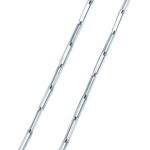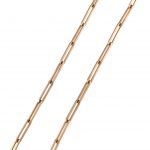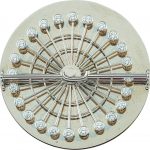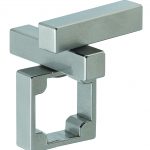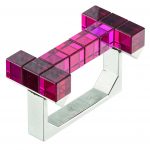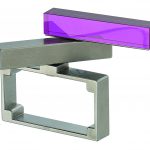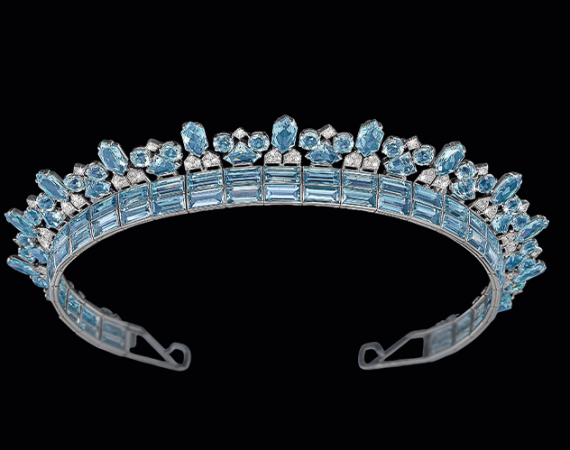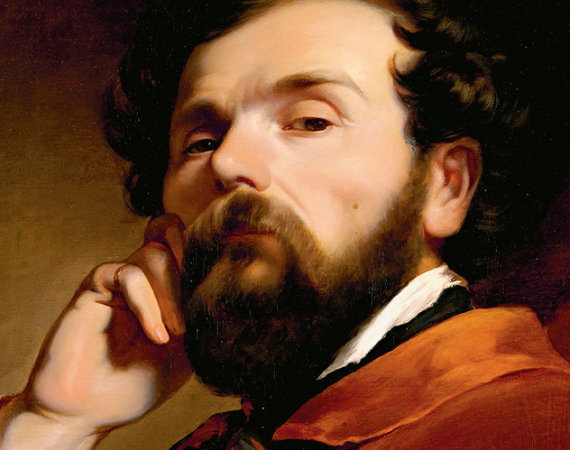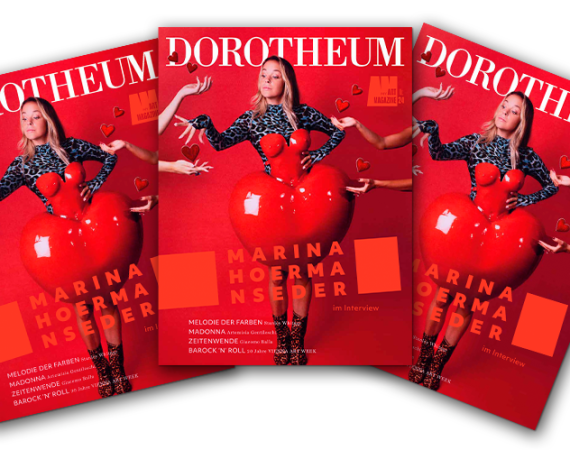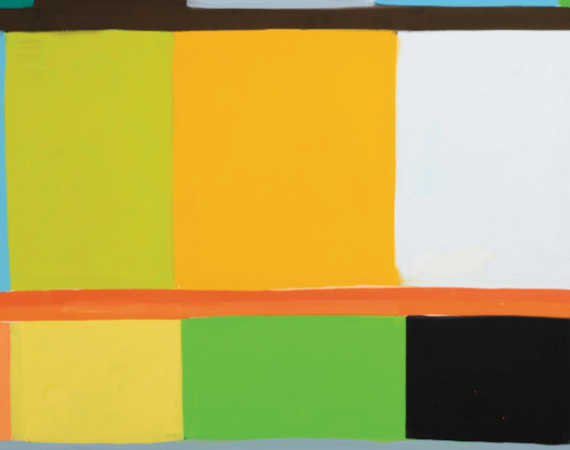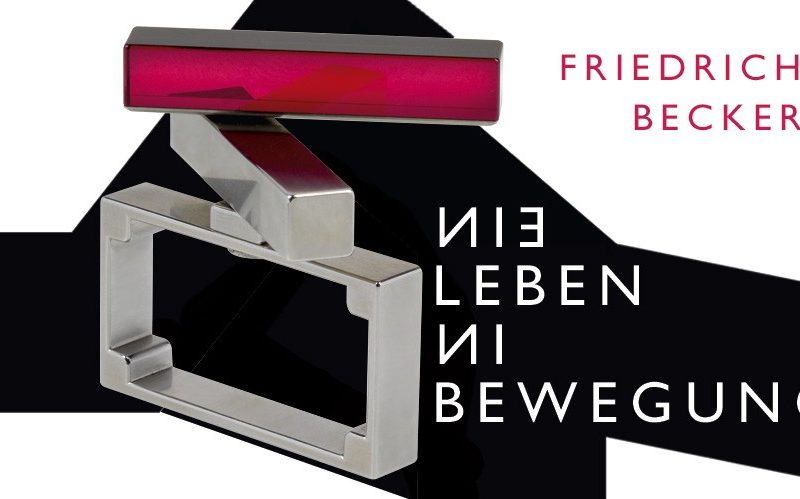
Friedrich Becker combined aesthetics and technology to form kinetic art, a genre that integrates movement as an essential part of the work. Petra Schäpers and Astrid Fialka-Herics on the momentum in the artist and goldsmith’s jewellery, which will be on auction on 30 November 2020 at the Palais Dorotheum Vienna.
Friedrich Becker – pioneering goldsmith
by Astrid Fialka-Herics
Friedrich Becker is considered the inventor of kinetic jewellery; he modestly described himself as a goldsmith. Gold was not the key, defining material in the oeuvre of the trained machinist, aircraft builder and designer.
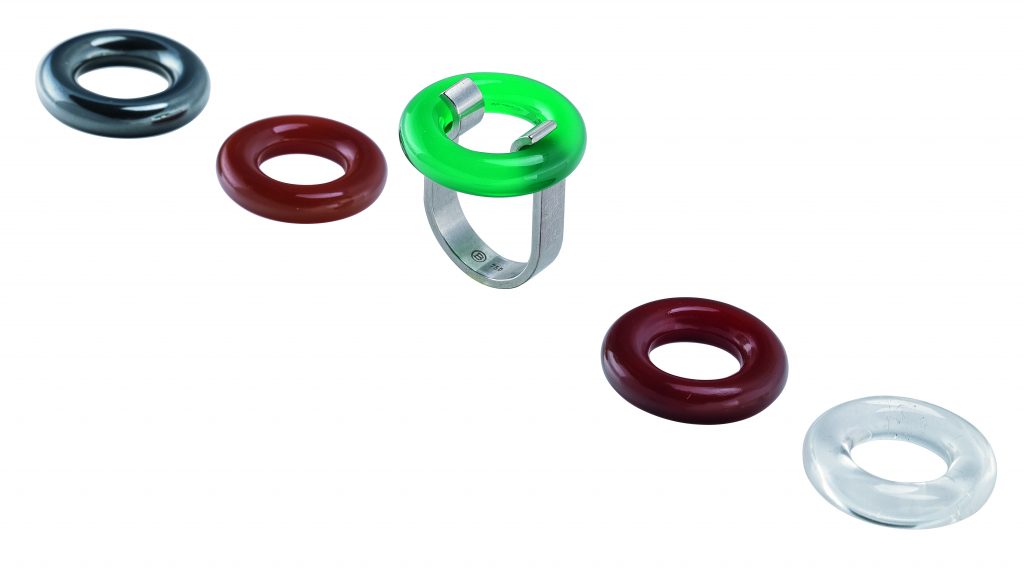
Schätzwert € 1.000 – 1.500
Jewellery – a Statement
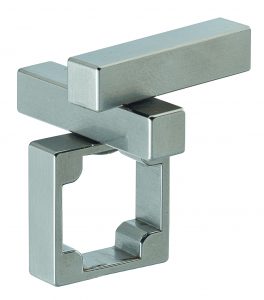
Schätzwert € 6.000 – 8.000
Becker’s jewellery pieces reveal a high technical quality and craftsmanship In their variety, but also the artist’s delight in working with and connecting various industrial materials such as steel and silver. The pieces were designed, crafted and finished with painstaking precision and skill. This and other factors are what elevates Becker’s jewellery pieces from simple adornment to artwork; they are statements.
Kinetic Jewellery
Friedrich Becker created kinetic jewelry from 1965 onward, taking jewellery production to new heights. He challenged himself with complex, difficult- to-execute designs involving moving parts, bearings, balance elements and momentum balls.
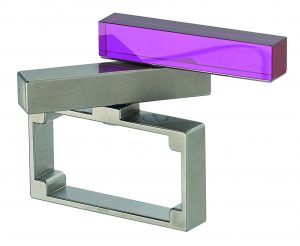
Schätzwert € 7.000 – 10.000
Kinetic jewelry struck a harmonious link between the basic rigidity of the material and the dynamics of movement. The jewellery-wearer is the driving mechanism: the wearer moves, and this movement carries over to the piece as a whole. Movement becomes part of the jewellery, which in turn becomes part of the wearer in a kind of synthesis.
His Choice of Materials
And yet, it isn’t just the captured movement that makes Friedrich Becker’s jewellery so distinctive. His choice of materials and the interplay of stone colours lend the pieces another kind of dynamism: highly polished surfaces reflect the gemstones and one another; matte-surface stones are contrasted with the specular shine of polished ones. Becker often juxtaposed complementary-coloured stones, making them appear even more luminous: they assert their presence without competing with or overwhelming the piece as a whole. The value lies less in the stone itself than in its texture and variety of color.
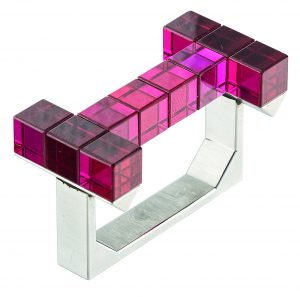
Schätzwert € 4.000 – 6.000
Friedrich Becker’s design speaks a purist, almost austere formal language. He juggles soft, round forms, straight lines and sharp edges in one and the same piece. Take his rings without curves, for example: a round, but angular track holds a rotating disc with a rectangular-cut diamond set in it.
AUCTION Jewellery
30 November 2020
A collection of Friedrich Becker jewellery will go up for auction at Dorotheum Vienna on 30 November 2020.
Friedrich Becker – kinetic artist
by Petra Schäpers and Susanne Zimmermann
“The observer, having hitherto been receptive (passive) in his contemplation of art works, became an active factor in the play of forces.”
This guiding principle from László Moholy-Nagy’s 1922 manifesto was as crucially important to Friedrich Becker’s large objects (1922–1997) as it was to art made by international artists’ groups at the end of the 1950s and early 1960s.
Kinetic works share a concept of art as malleable and open to influence from both the viewer and a changing spatial situation. Kinetic art is designed with the entire situation in mind (including movement within and in front of the artwork) rather than a static contemplation of materials. Becker’s strong belief in the value of technical execution and clarity of design is evident not only in his jewellery, but in other projects as well, including large sculptures such as “Düsseldorfer Radschläger” (Düsseldorf ’s Cartwheeler) and a variety of public artworks. The rigorous design and execution of his objects highlights the artist’s preference for mechanical aesthetics. He delighted in fusing real movement, such as that of “wave” or pendulum objects (usually powered by a motor) with the optical effect of reflections on glass surfaces or polished metals.
The kinetic oeuvre shows how technical as well as formal aspects could be transferred from large to small formats and vice versa. With the exception of large sculptures incorporating wave and pendulum kinetics, Becker honed his ideas first in a small, minimal format – jewellery – before scaling them up to the monumental object. Nevertheless, he was also known to translate many of his large-scale kinetic works back to the smallness of a piece of jewellery years later.
“Friedrich Becker’s artworks stand in the clear tradition of Constructivism; they use movement – architecture’s fourth dimension – to artfully intervene in the functionalist everyday world, prompting astonishment, bafflement, befuddlement or a smiling shake of the head. [They] enrich reality, adding an aspect that, both artistically and intellectually, can be experienced as a dimension in its own right.”
(Friedrich Becker. Schmuck. Kinetik. Objekte, 1997)

